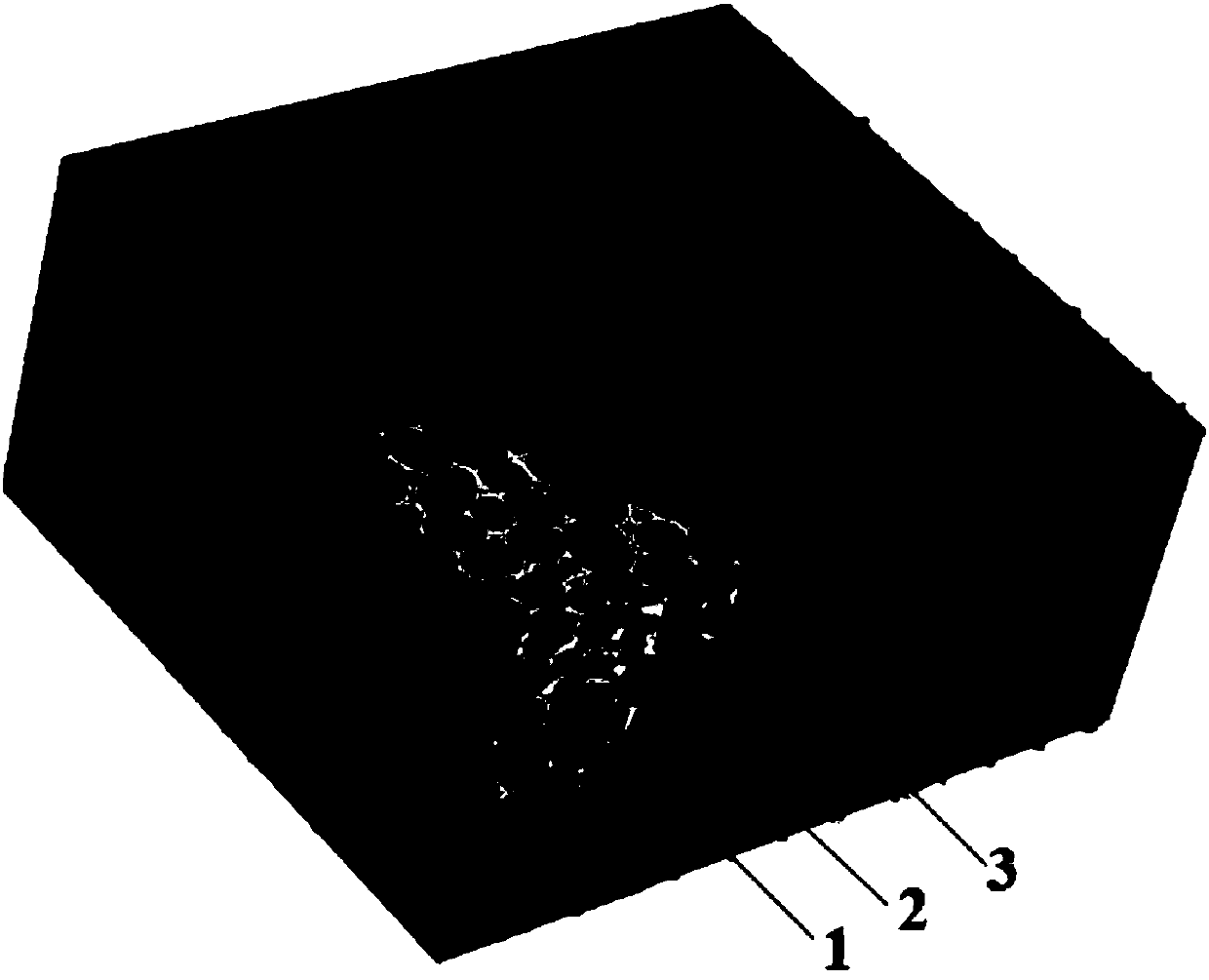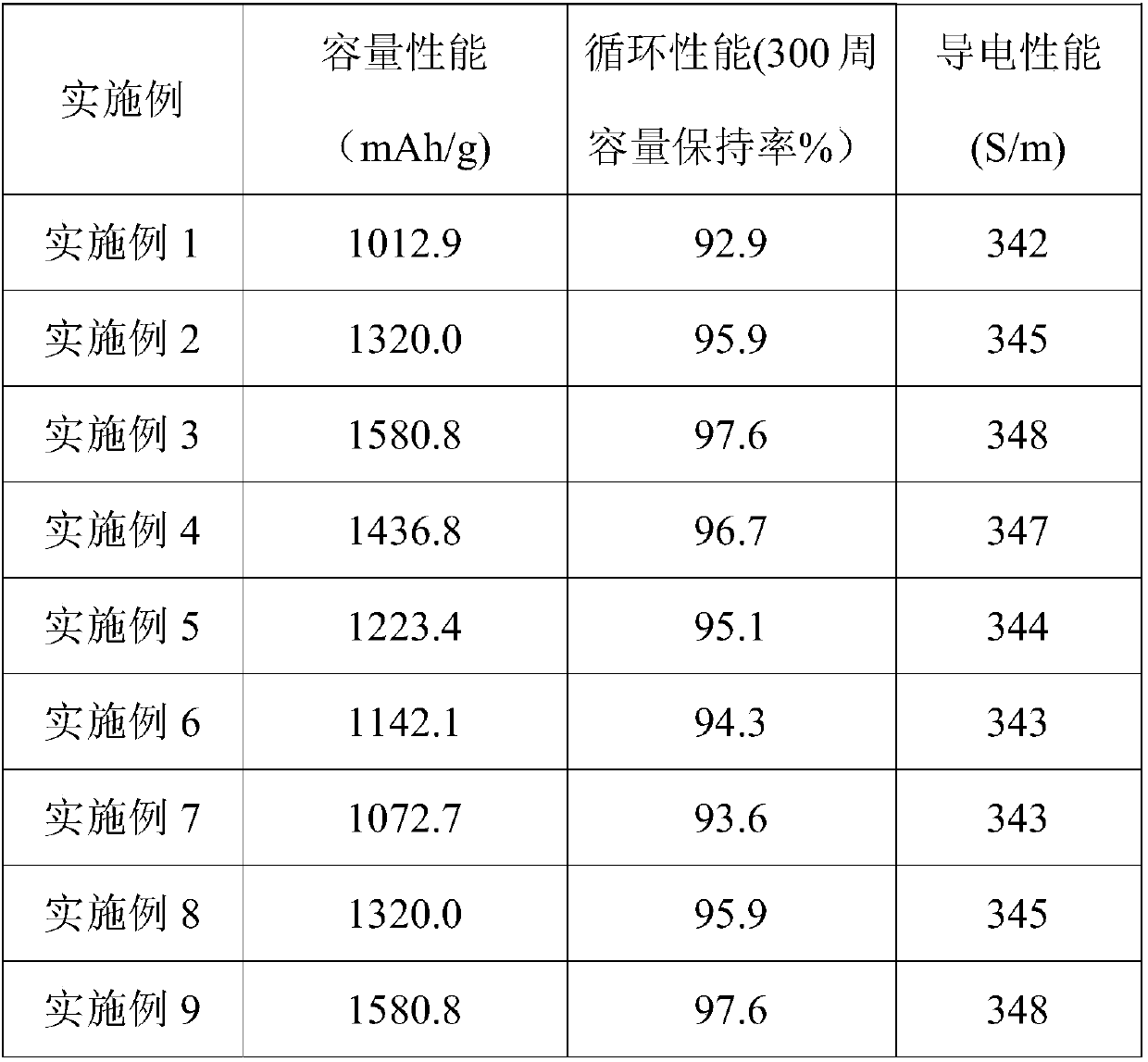Silicon-carbon composite material of closed cage structure and preparation method of silicon-carbon composite material of closed cage structure
A technology of silicon-carbon composite materials and structural materials, applied in structural parts, nanotechnology for materials and surface science, electrical components, etc., can solve problems such as specific capacity attenuation, reduce internal stress, prolong battery life, and improve The effect of capacity performance
- Summary
- Abstract
- Description
- Claims
- Application Information
AI Technical Summary
Problems solved by technology
Method used
Image
Examples
Embodiment 1
[0050] 153.84g of silicon tetrachloride was dispersed in 1L of anhydrous ethane to obtain solution A; then 30.768g of porous carbon was added to solution A; stirred for 2h, then filtered to obtain porous carbon adsorbed on silicon tetrachloride, heat-treated at 100°C, to Add 65.2 g of hydrogen peroxide dropwise to the treated porous carbon for 5 h, then filter, wash the filter cake with absolute ethanol, remove excess hydrogen peroxide, and obtain solid B, add 30.768 g of sucrose to solid B, and ball mill for 2 h at a ball milling speed of 300 rpm to obtain a mixture C. The mixture C was calcined at 900° C. under a hydrogen atmosphere for 5 hours to obtain a silicon / carbon composite material with a closed cage structure.
Embodiment 2
[0052] Disperse 15.384g of silicon tetrachloride in 1L of anhydrous ethane to obtain solution A; then add 1.5384g of activated carbon to solution A; stir for 1.5h, then filter to obtain activated carbon that adsorbs silicon tetrachloride, heat treatment at 120°C, and Add 3.3 g of ether solution of lithium aluminum hydride dropwise to the final activated carbon for 6 h, then filter, wash the filter cake with absolute ethanol, remove excess ether solution of lithium aluminum hydride, and obtain solid B, add 1.5384 g of glucose to solid B, and use 100 rpm Milling at a ball milling speed for 3 hours to obtain a mixture C, which was calcined at 950° C. under an argon atmosphere for 6 hours to finally obtain a silica / carbon composite material with a closed cage structure.
Embodiment 3
[0054] 30.768g of silicon tetrachloride was dispersed in 1L of anhydrous ethane to obtain solution A; then 1.5384g of porous carbon was added to solution A; stirred for 2h, then filtered to obtain porous carbon adsorbed on silicon tetrachloride, heat-treated at 130°C, and Add 6.5 g of tetrahydrofuran solution of lithium aluminum hydride dropwise to the treated porous carbon for 7 hours, then filter, wash the filter cake with absolute ethanol, remove excess tetrahydrofuran solution of lithium aluminum hydride, obtain solid B, add 1.5384 g of cellulose to solid B , milled at a ball milling speed of 150rpm for 4h to obtain a mixture C, which was calcined at 1000°C under a nitrogen atmosphere for 7h, and finally a closed cage-like silicon oxide / carbon composite was obtained.
PUM
| Property | Measurement | Unit |
|---|---|---|
| particle diameter | aaaaa | aaaaa |
| porosity | aaaaa | aaaaa |
| retention rate | aaaaa | aaaaa |
Abstract
Description
Claims
Application Information
 Login to View More
Login to View More - R&D
- Intellectual Property
- Life Sciences
- Materials
- Tech Scout
- Unparalleled Data Quality
- Higher Quality Content
- 60% Fewer Hallucinations
Browse by: Latest US Patents, China's latest patents, Technical Efficacy Thesaurus, Application Domain, Technology Topic, Popular Technical Reports.
© 2025 PatSnap. All rights reserved.Legal|Privacy policy|Modern Slavery Act Transparency Statement|Sitemap|About US| Contact US: help@patsnap.com


